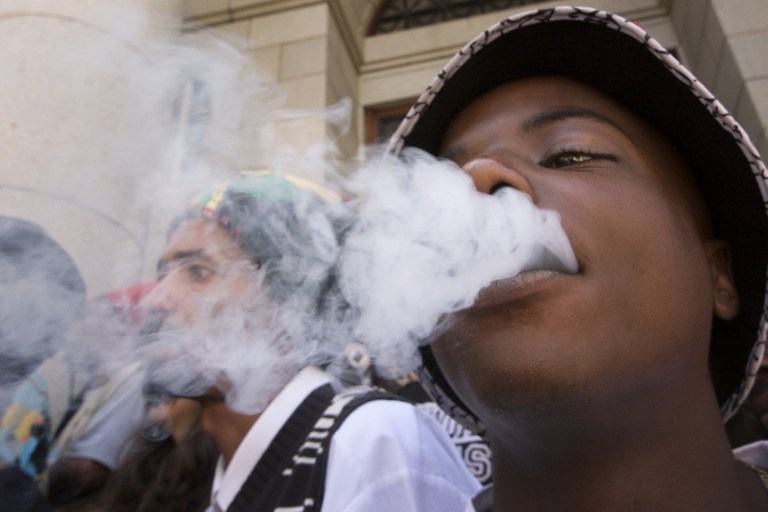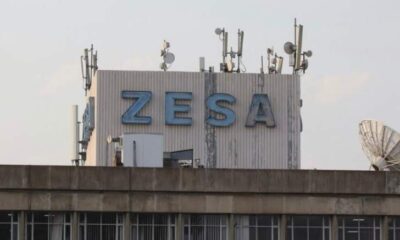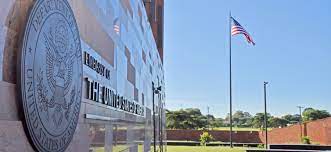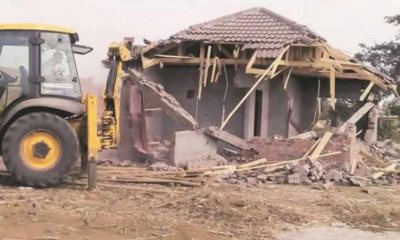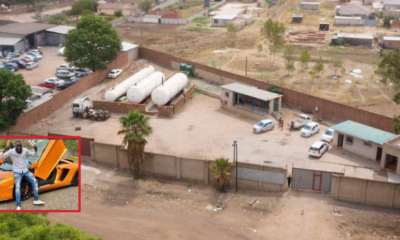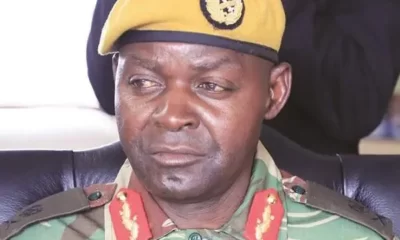BLESSING TAONA DENHERE
ALICE Walker, a former heroin addict, after successfully recovering from her drug addiction once rhetorically and soberly said this: “What is addiction, really? It is a sign, a signal, a symptom of distress. It is a language that tells us about a plight that must be understood.”
Recently, on 26 January 2023, Dominican Convent High School, an elite Catholic-run school in Harare, expelled eight of its Advanced Level students on allegations that they were found with illicit drugs at the school’s leadership camp in Nyanga, Manicaland province.
This decision sent shockwaves across the Harare community and Zimbabwean society, and subsequently divided opinion over the merits and demerits of their expulsion.
Consequently, the expulsion of these eight school girls has brought into sharp focus and national attention the scourge of drug abuse and addiction among youths in Zimbabwe.
The suspension points to the fact that the problems of drug abuse are no longer confined to the youths from the working class and underclass background. Drug and substance abuse has tentacles across the socio-economic and class divide, and has spread into middle-class and privileged classes.
In this opinion piece, I will situate the scourge of drug and substance abuse within the wider context of socio-economic malaise and the attendant moral decadence within Zimbabwean society.
Accordingly, I will argue that this largely ignored drug epidemic has inevitably become a national disaster which demands sound political will from both the ruling party and the opposition parties.
Crucially, I will make a strong case on why there will be no quick-fix solution to this scourge and that the solutions to arrest this scourge are inextricably linked with addressing the deplorable socio-economic challenges that have rendered most youths under-employed and jobless.
Narcotisation of poverty
Drugs have historically existed in Zimbabwe and the most common drug grown or imported into Zimbabwe is cannabis (mbanje). This has been purely used for cultural and traditional purposes by specific ethnic groups in Zimbabwe.
The Tonga community along the Zambezi River in Binga use it openly as part of their traditional rituals and ceremonies and also for its healing properties. It is also grown in Chipinge, Chiredzi and Nyanga.
Cannabis is also smuggled in from Malawi, Mozambique and other neighbouring countries where it is more commonly used. Accordingly, it was reported in April 1980 that the late legendary reggae maestro Bob Marley before he performed on the eve of our Independence in 1980 at Rufaro Stadium in Harare, together with his band The Wailers, paid pilgrimage to a Mutoko village where they got the chance to smoke the locally produced cannabis.
Needless to say cocaine, heroin and other hard drugs have been recently making long trips from their traditional bases in Latin America to Zimbabwe. The United Nations Office on Drugs and Crime 2015 World Drug Report reveals that Afghan heroin bound for Europe and other regions has been smuggled to southern Africa, including Zimbabwe, across the Indian Ocean.
Methamphetamine produced in West Africa is also being smuggled to East and South-East Asia via southern African countries, including Zimbabwe.
Therefore, it has increasingly become clear that Zimbabwe is now awash with drugs. There is now an underground narcotics economy that is flourishing in Zimbabwe.
As such, according to the latest statistics from the government of Zimbabwe, 57.1% of youths are consuming illicit drugs and narcotics. This is a disturbing phenomenon because demographically the youths of Zimbabwe are the majority.
Consequently, it means that the nation is at risk of losing the whole generation of its supposedly socially and economically active young population and future leaders to illicit drugs.
The youths of Zimbabwe are particularly in a difficult and dire situation in the sense that the high schools and tertiary institutions have become conveyor belts of churning out jobless youthful graduates.
When the youths of Zimbabwe graduate from either secondary schools or from tertiary education, they are confronted with a bleak and dark future where the prospects of getting a job or earning an honest living are very much negligible. Therefore, it is these exogenous factors that are railroading youths to indulge in drug and substance misuse. As a result, for the de-proletarianised youths drug consumption becomes an anaesthetic coping mechanism to ease their pain, frustrations and ultimately drown their sorrows.
Hence Frank Tallis, a former cocaine addict, once said: “At first, addiction is maintained by pleasure, but the intensity of the pleasure gradually diminishes and the addiction is then maintained by the avoidance of pain.”
For most ghetto youths are rendered invisible, irrelevant and forgotten in their impoverished communities, on the street corners and local pubs and shebeens, where they huddle, hang out and sustain themselves through spiritual masturbation of drug abuse in an effort to drown and soothe their disappointments and sorrows.
However, on the flip side of it we are witnessing drug consumption and substance misuse breaching the socio-economic divide and extending into hitherto “drug-free zones”.
That is, we are witnessing youths from middle-class and affluent backgrounds also consuming and smoking illicit drugs. Accordingly, the Dominican Convent fiasco shows that illicit drugs have now penetrated every socio-economic facet of Zimbabwean society.
But illicit drug abuse also exposes the fault-lines of the drug consumption divide. That is for the middle-class youths, narcotic and drug misuse in most of the cases is driven by purely a sense of experimental enjoyment or for recreational purposes.
As these youths are protected and insulated by their middle-class wealth and privileged position from the daily socio-economic ravages that plague the ghettoised youths.
A disproportionate number of drug users are from the ghettos, which typifies ground zeroes of arrested development enclaves in Zimbabwe. Consequently, the drug epidemic among the youths spawned what could be classified as the narcotisation of poverty.
Suffice it to say there are sound legislative instruments in Zimbabwe that any serious and concerned government can deploy to combat this drug menace. For instance, there is the Dangerous Drugs Act [Chapter 15:02] which makes it clear that the following types of drugs are illegal: Coca leaves, coca bush, cannabis plant or Indian hemp (both raw and prepared) also known as “bhang”, “camba”, “dagga”, “mbanje” or “intsangu” and opium (raw and prepared).
The law prohibits and controls the production or manufacture, possession, sale, use or distribution of drugs and the cultivation of plants. Crimes punishable under the Criminal Law Code relating to dealing in dangerous drugs include unlawful possession or use of dangerous drugs, allowing one’s premises to be used for the unlawful dealing in or use of dangerous drugs hiding, disguising or benefitting from the proceeds of the unlawful dealing in dangerous drugs as well as possessing and using dangerous drugs.
Furthermore, Zimbabwe is a party to many international instruments that address the problem of drug trafficking. It is party to the 1961 United Nations Single Convention on Narcotic Drugs, the 1971 UN Convention on Psychotropic Substances, the 1988 UN Convention against Illicit Traffic in Narcotic Drugs and Psychotropic Substances, the 2000 UN Convention against Transnational Organised Crime, and the 2003 UN Convention Against Corruption. It is also a member of the South (Protocol on Combating Illicit Drug Trafficking).
Consequently, a question arises: Why is it that there has been lack of both political will and governmental will to decisively deal with this drug menace that is devastating the communities and a whole generation of youths?
There are different answers to this pertinent question on the lacklustre approach of the Zanu PF government. It has been alleged that some of the drug barons who are at the top of the food chain of narco-economics are politically connected to the ruling party.
Therefore, their proximity to the ruling elites makes them untouchable and insulates them from being arrested or charged for their criminal activities.
Another reason that could explain why the Zanu PF government is adopting an ostracism approach of burying its head in the sand while young people are destroying and killing themselves with illicit drugs is that the narcotics are being used by youths as an escape mechanism from the harsh realities of the socio-economic failures of the regime.
Therefore, most of the youths, due to their narcotised and zombified state, are failing to capture and utilise their individual and collective agency. That ultimately has disappointingly led them to being socially and politically demobilised and disengaged from the political and governmental matters of their nation. That could perhaps be the one of the reasons there has been no massive firewall of youths registered to vote.
Crucially it is important to provide possible ideas and scenarios that a serious government and opposition parties could adopt in terms of tackling the scourge of drug abuse and substance misuse.
Thus, in the short-term, what needs to be done is to destroy the narco-economies and drug cartels of the known drug barons and drug baronesses. As pointed out earlier, Zimbabwe has legislative instruments and the criminal justice system that can be able to decisively deal with this problem.
That is if the powers that be demonstrate political will in tackling this scourge. Moreover, one of the push-factors that have driven the youths to misuse drugs is the harsh socio-economic failures in Zimbabwe. Accordingly, the current socio-economic challenges and socio-political fundamentals need to be seriously addressed.
Zimbabweans need to elect a competent and professional government in 2023 that can be able to arrest this 23-year-old socio-economic decline. As such, having a government that can create employment and restore the social contract can indeed save a lot of youths from engaging in self-destructive behaviour of drug misuse.
The war on drugs should be inextricably intertwined with war on poverty. Accordingly, winning the war against poverty will have a domino effect of winning the war against drugs.
Furthermore, the opposition, particularly the Citizens’ Coalition for Change (CCC), must have a clear and sound drug policy. It must distinguish itself from the lackadaisical approach of the Zanu PF government to this national disaster. Thus, there is a need to formulate a drug policy that treats the drug epidemic both as a health issue and criminal matter. This then also requires a policy that takes into account the views and circumstances of the users and the community and that treats the unemployed drug user as a victim and the drug baron or drug baroness as the perpetrator.
Also, much can be learnt and borrowed from other jurisdictions, which have decriminalised soft and recreational drugs, coupled with the establishment of cannabis cafes and cannabis smoking zones where cannabis is legally smoked under a controlled environment. In addition, this drug epidemic demands the establishment of alcohol and drug recovery centres where the drug addicts are treated and given help to overcome their addictions. Additionally, there is a genuine case for incorporating subjects on risks of drug abuse in the school curriculum, particularly for both primary and secondary education levels.
This will ensure youths get educated, informed and sensitised about the dangers of drug abuse and substance misuse.
Moreover, there is also a need to have aggressive and strong community outreach programmes that are designed to conscientise the hard-hit communities about the ravages which are being brought about by this drug epidemic among the youths and their communities.
This can be done in a similar fashion the HIV and Aids campaigns and education programmes were conducted in the late 1990s and early 2000s.
About the writer: Blessing Taona Denhere is a UK-based human rights lawyer and international development practitioner.
